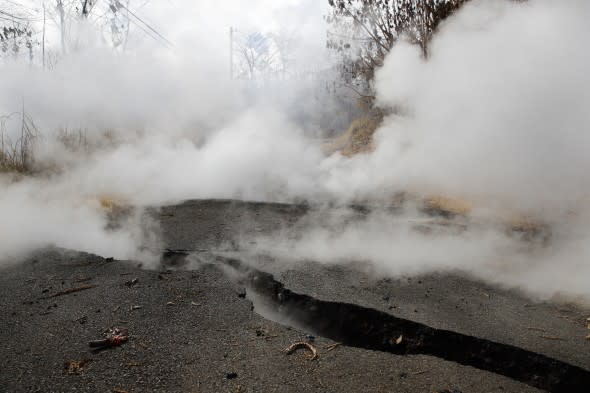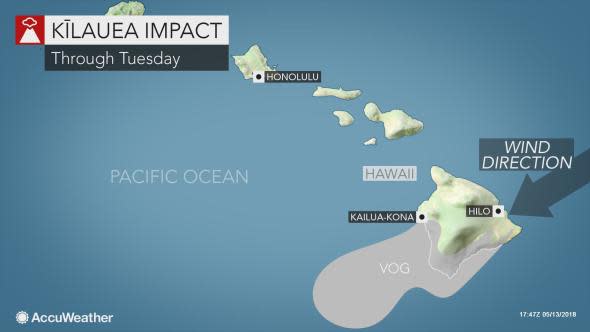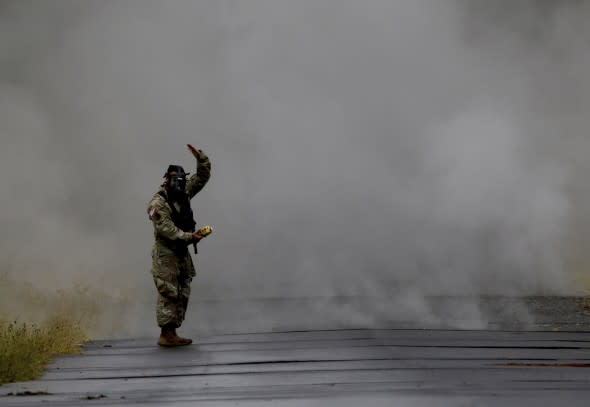Kīlauea's volcanic smog to create health hazards across Hawaii's Big Island through this week
As new evacuation orders were issued on Sunday, portions of Hawaii's Big Island will continue to bear the brunt of the toxic gases and vog spewing from the Kīlauea eruption this week.
Volcanic smog, or vog, is a form of air pollution that is caused by the sulfur dioxide and other gases and particles emitted by an erupting volcano.

Toxic gases rise from cracks in the Leilani Estates subdivision near Pahoa, Hawaii, Friday, May 11, 2018. (AP Photo/Jae C. Hong)
The Kīlauea volcano, which first erupted at the beginning of May, has over one dozen fissures from which the poisonous gases are being emitted.
A typical trade-wind pattern, which features a breeze from the northeast, will persist across the Hawaiian Islands through the early part of the week.
This will direct hazardous vog to southern and western areas of the Big Island.

The smaller islands of Maui, Lana'i, Moloka'i and O'ahu will be spared from the pollutants in this wind flow.
"The trade winds are expected to weaken at midweek," AccuWeather Senior Meteorologist Kristina Pydynowski said. "It is possible that causes some vog to reach the smaller islands, but that would only be for a brief time as trade winds may increase again later in the week."
People in the affected areas should keep up-to-date with the latest air quality advisory levels and limit time outdoors without proper protection or avoid going outside at all.
"Poor air quality can have both short and long term health impacts on anyone breathing it in," AccuWeather Meteorologist and air quality blogger Faith Eherts said.

First Lt. Aaron Hew Len, of the U.S. National Guard, tests air quality near cracks that are emitting toxic gasses from a lava flow in the Leilani Estates subdivision near Pahoa, Hawaii, Tuesday, May 8, 2018. (AP Photo/Caleb Jones)
"Short-term symptoms include itchy eyes, a sore throat, coughing, nausea and trouble breathing," she said. "These are especially pronounced for the elderly, the very young and anyone with preexisting respiratory and cardiovascular health issues such as asthma."
"Smoke and other particles in the air such as sulfur dioxide enter the bloodstream through the lungs, leading to longer term health problems down the road," Eherts added.
While the worst of the pollution will focus over the Big Island in the short term, residents and visitors of the other islands should not let their guard down as possible wind shifts later in the month could once again spread pollutants northwestward.
